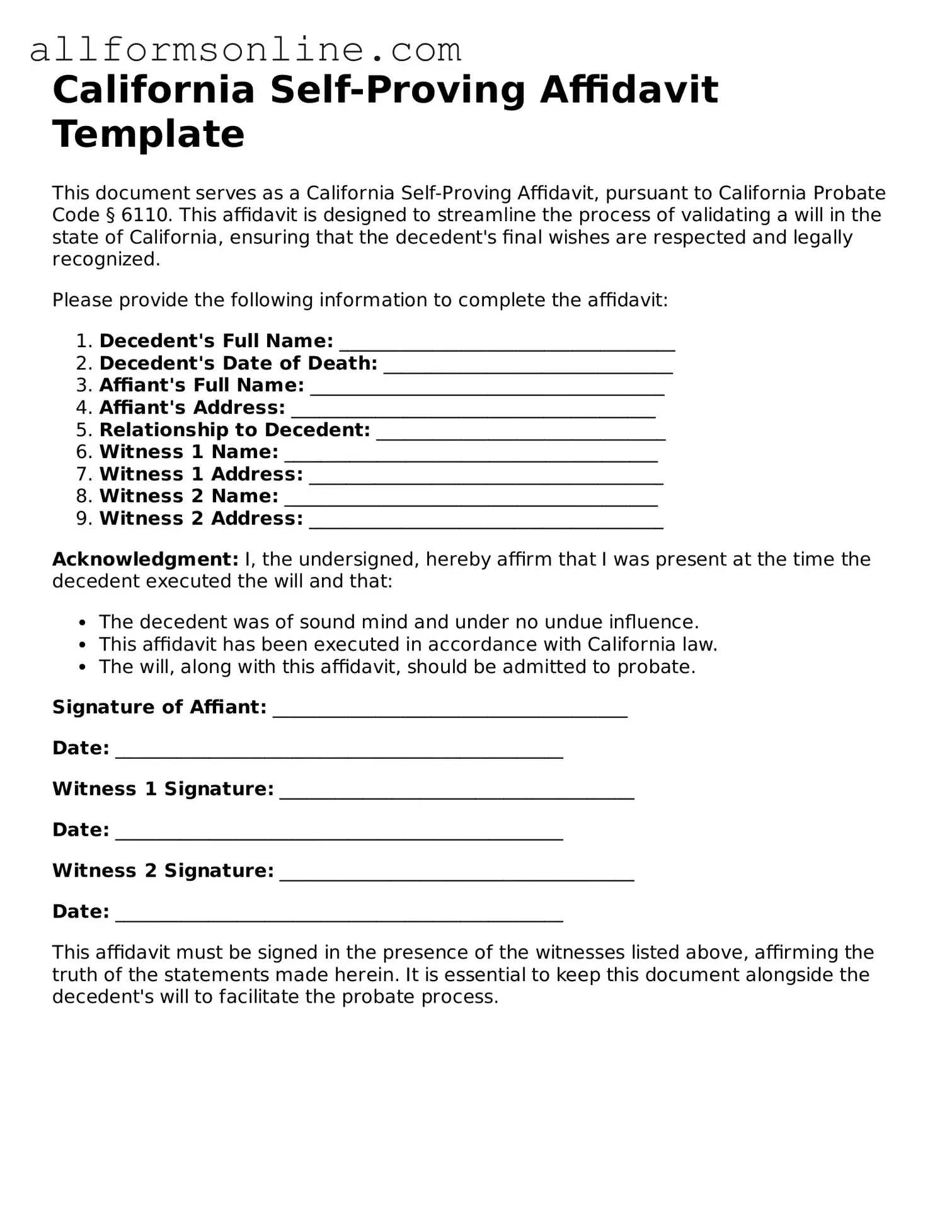What is a California Self-Proving Affidavit?
A California Self-Proving Affidavit is a legal document that allows a testator's will to be validated without the need for witnesses to testify in court after the testator's death. This affidavit is typically signed by the testator and witnesses at the time the will is executed. It serves to affirm that the will was created in accordance with California law and that the testator was of sound mind and not under duress when signing the document.
How do I complete a Self-Proving Affidavit in California?
To complete a Self-Proving Affidavit, you need to follow several steps. First, ensure that your will is properly drafted and includes all necessary elements. Next, when you sign your will, have at least two witnesses present. After signing, both witnesses should also sign the Self-Proving Affidavit, affirming that they witnessed the testator sign the will. It is important to include the date and location where the will was executed. Finally, make sure to keep the affidavit with your will in a safe place to ensure it is available when needed.
Is a Self-Proving Affidavit required in California?
No, a Self-Proving Affidavit is not required to create a valid will in California. However, having one can simplify the probate process. If a will lacks a Self-Proving Affidavit, witnesses may need to be located and called to testify about the will’s execution, which can delay the probate process and increase costs. Therefore, while it is not mandatory, it is highly recommended for those who wish to streamline the administration of their estate.
Can I use a Self-Proving Affidavit for a will created in another state?
Generally, a Self-Proving Affidavit must comply with the laws of the state where the will is executed. If a will was created in another state, it may still be valid in California, but it may not automatically be accompanied by a California Self-Proving Affidavit. In such cases, it is advisable to consult with a legal professional to determine whether the will can be validated in California and if a Self-Proving Affidavit should be executed to ensure a smoother probate process.
